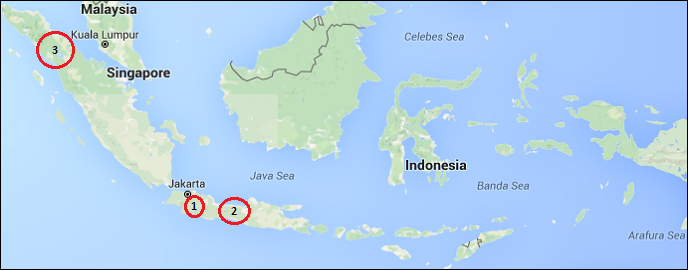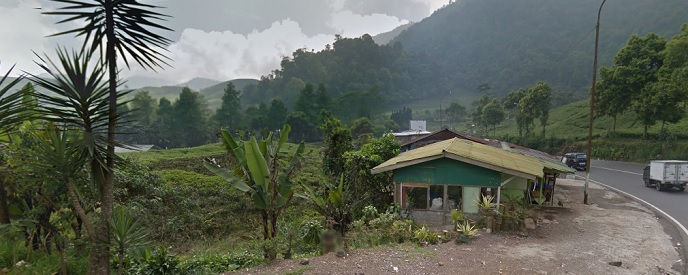Tea
Tea is one of the world's most consumed beverages. It is thought to originate from China where tea has been drunk for thousands of years. Around the 16th century, when the Portuguese were expanding their power, this beverage was imported to Europe and quickly gained popularity which, in turn, made the Portuguese and the Dutch decide to establish large-scale tea plantations in their tropical colonies.
Constant temperatures and humidity are ideal conditions for the tea plant to grow. Such conditions can be found in the tropical and subtropical climates in Asia where currently more than 60 percent of global tea production is cultivated. In particular, the cooler highlands will produce a good quality of tea leaves. The tea plant can be first harvested after it has reached the age of around four years. When harvesting, only young leaves are selected, implying that manual picking is more efficient than using mechanical equipment. Tea production is therefore a labor-intensive business.
Two countries that dominate the global tea production are China and India. Together these two countries account for almost half of the world's tea production.
World's Largest Tea Producers in 2014
| 1. China | 1,980,000 |
| 2. India | 1,184,800 |
| 3. Kenya | 445,105 |
| 4. Sri Lanka | 338,032 |
| 7. Indonesia | 132,000 |
in metric tons
Source: Statista
Tea in Indonesia
Production and Export of Indonesian Tea
Indonesia currently ranks seventh on the list of the world's largest tea producers. However, due to the lucrative business prospects of palm oil the country's tea output has declined in recent years as some tea plantations were transformed into palm oil plantations, while other tea estates have been given up for the production of vegetables or other crops considered more profitable. Despite the resulting decrease in land acreage, tea production has remained relatively stable. This indicates that the remaining tea estates have become more productive.
Tea Production & Export Indonesia:
| 2014 | 2015 | 2016 | 2017 | 2018F | |
| Tea Production (in metric tons) |
146,682 | 130,000 | n.a. | 139,362 | 140,234 |
| Tea Export (in metric tons) |
n.a. | 62,700 |
| 2008 | 2009 | 2010 | 2011 | 2012 |
2013 | |
| Tea Production (in metric tons) |
153,971 | 156,900 | 156,600 | 150,800 | 150,900 | 152,700 |
| Tea Export (in metric tons) |
91,700 | 92,300 | 87,100 | 75,500 | 70,100 | 70,800 |
Source: Food and Agriculture Organization of the United Nations
The provinces that produce most of Indonesia's tea output are:
1. West Java (accounts for around 70 percent of national tea production)
2. Central Java
3. North Sumatra

Nearly half of Indonesia's tea production is exported abroad. The main export markets are Russia, Great Britain, and Pakistan. Indonesian tea that is exported primarily originates from the country's large plantations, both state-owned and private (this is usually high-grade or premium tea), while the majority of smallholders are more oriented towards the domestic market (having a lower quality of tea and thus cheaper selling price). These smallholders, who mostly use older technology and poor farming methods, usually have no processing facilities. This domestic market is not big, reflected by Indonesia's low per capita tea consumption rate. In 2014, Indonesians consumed an average of 0.32 kilogram of tea per person per year (the world average was 0.57 kilogram in 2014, while Turkey was the clear leader with 7.54 kilogram).
The big tea plantations in Indonesia are usually run by state-owned enterprises (for example Perkebunan Nusantara). Several examples of large private tea growers in Indonesia are Kabepe Chakra and Gunung Slamat. Consumer goods company Unilever Indonesia buys its raw tea materials from large state-owned or private plantations to produce its tea products.
Compared to other key tea growing countries, Indonesia's yield (per hectare) is low as most smallholders lack the financial means and expertise to optimize production, while a large chunk of Indonesian tea is grown from seeds rather than from clones.
Indonesian tea is known for having the world's highest catechin content (a natural antioxidant). Most of the country's tea production constitutes black tea, followed by green tea.
Similar to other commodities, Indonesia relies on the export of bulk tea, which is a primary (upstream) product. The underdevelopment of Indonesia's downstream tea industry curtails the competitiveness of the Indonesian tea industry on the international market. The export of downstream tea products account for only around 6 percent of total tea exports.

Future Prospects Tea Industry
Global tea consumption is forecast to rise by nearly three percent annually over the coming decade. Although Indonesia's domestic tea consumption has risen robustly over the past decades, per capita tea consumption remains low (moreover Indonesia's urbanized middle class increasingly develops a 'coffee consumption-lifestyle"). Nevertheless, consumption of ice tea drinks has grown strongly in recent years. Tea imports, although coming from a low base, have surged in the Reformation period (particularly from Vietnam). Such imports are regarded a threat to local growers' sales and margins and therefore there is the need to boost tea production in Indonesia.
The Indonesian Agriculture Ministry announced in 2014 that it would double the budget to revitalize the country's tea plantations (particularly in West Java as around 60 percent the nation's tea plantations are located here) in an effort to boost Indonesia's tea output. This budget is to be used for an intensification program (which includes the distribution of fertilizers) for 1,700 hectares and a rehabilitation program (which includes distribution of seeds and fertilizers) for 1,500 hectares of tea plantations.
Although labor costs are still relatively low in Indonesia, minimum wages have been growing rapidly over the past couple of years. Being a labor-intensive industry (picking is usually done by hand), labor costs account for most of tea growers' operational costs. As such, rapidly rising minimum wages are a concern.
Another concern is infrastructure. Indonesia is characterized by weak infrastructure (both quantity and quality). This situation causes logistics costs to rise steeply, making it more expensive than it should be to transport raw tea from the plantation to the processing facility and then to the retail outlet.
Updated on 22 November 2016
